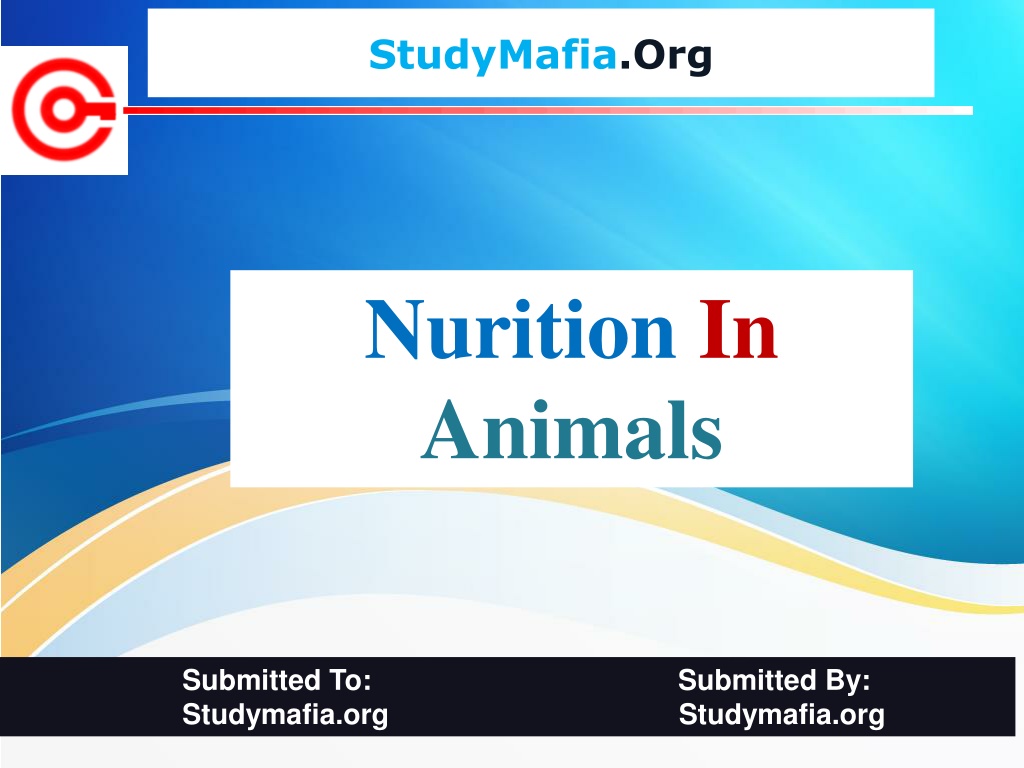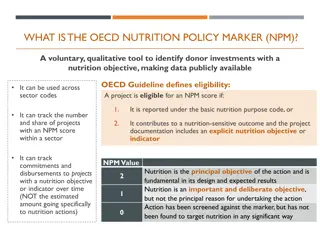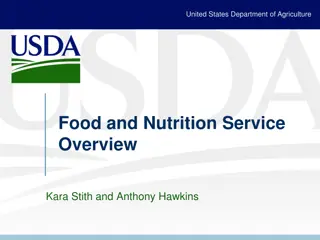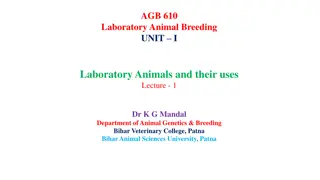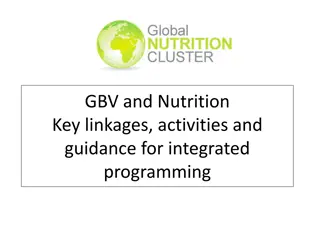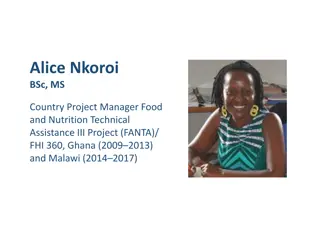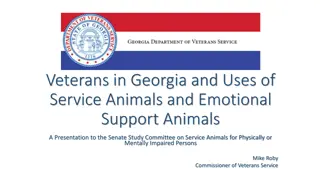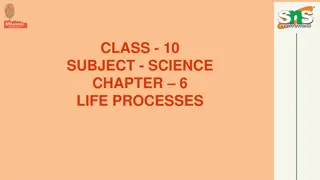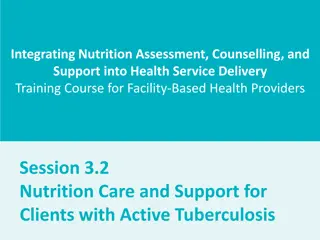Nutrition in Animals: Types and Process
Nutrition in animals is vital for their survival, with various categories like herbivores, carnivores, and omnivores. Different modes of nutrition include filter feeding, deposit feeding, bulk feeding, fluid feeding, and suction feeding. The process of nutrition involves ingestion, digestion, absorption, and assimilation of nutrients. Specialization in feeding habits has led to the evolution of distinct structures in animals. This comprehensive guide explores the types and process of nutrition in animals.
Download Presentation

Please find below an Image/Link to download the presentation.
The content on the website is provided AS IS for your information and personal use only. It may not be sold, licensed, or shared on other websites without obtaining consent from the author.If you encounter any issues during the download, it is possible that the publisher has removed the file from their server.
You are allowed to download the files provided on this website for personal or commercial use, subject to the condition that they are used lawfully. All files are the property of their respective owners.
The content on the website is provided AS IS for your information and personal use only. It may not be sold, licensed, or shared on other websites without obtaining consent from the author.
E N D
Presentation Transcript
StudyMafia.Org Nurition In Animals Submitted To: Submitted By: Studymafia.org Studymafia.org
Table Contents Definition Introduction Categories of Animals Types of Nutrition in Animals Process of Nutrition in Animals Modes of Nutrition in Animals Conclusion 2
Definition Nutrition in animals depends upon the feeding habits of the animals. The process of taking in food is called ingestion. The method of ingestion is different in different animals. 3
Introduction The specialization of organisms towards specific food sources and of course specific ways of eating is one of the major causes of the evolution of form and function. For example, the differences in the parts of the mouth and shape of the teeth in whales, mosquitos, tigers and sharks or distinct forms of beaks in birds, such as in hawks, woodpeckers, pelicans, hummingbirds, and parrots are the results of adaptation to different types of eating by these animals. 4
Categories of Animals Herbivores: Herbivores are animals that depend upon plants and fruits for their nutrition. Cows, goats, sheep, buffaloes, etc. are herbivores. Carnivores: Carnivores are animals that depend upon other animals for food. Lion, tigers, wolfs are some examples of carnivores. Omnivores: These include organisms that eat both plants and animals. Humans, bears, dogs, crows are omnivores. 6
Types of Nutrition in Animals Filter Feeding: obtaining nutrients from particles suspended in water. Commonly used by fish. Deposit feeding: obtaining nutrients from particles suspended in the soil. Earthworms use this mode of ingestion. Bulk feeding: obtaining nutrients by eating the whole of an organism. Example: Python. 7
Types of Nutrition in Animals Fluid feeding: obtaining nutrients by consuming other organisms fluids. Honey bees, and mosquitos exhibit this mode of food intake. Ram feeding and suction feeding: ingesting prey via the surrounding fluids. This mode of ingestion is usually exhibited by aquatic predators such as bony fish. 8
Process of Nutrition in Animals Ingestion is the process of taking in food. Digestion In this process, the larger food particles are broken down into smaller, water-soluble particles. There are physical or chemical processes for digesting food. Ingestion 9
Process of Nutrition in Animals The digested food is absorbed into the bloodstream through the intestinal wall. Assimilation The absorbed food is used for energy, growth and repair of the cells of the body. Egestion The undigested food is removed from the body in the form of faeces. This process is known as egestion. Absorption 10
Modes of Nutrition in Animals Autotrophic nutrition: In this type of nutrition, the plants and other photosynthetic organisms prepare their own food with the help of sunlight, water and carbon dioxide. Heterotrophic nutrition: The animals cannot prepare their own food. Therefore, they have to rely on other animals for nutrition. This is known as heterotrophic nutrition. 11
Conclusion Nutrition in animals is as important as it is for plants. Plants prepare their own food by the process of photosynthesis but animals cannot prepare their own food, hence they need to depend on plants or other animals for their food. 13
Thanks To StudyMafia.org
